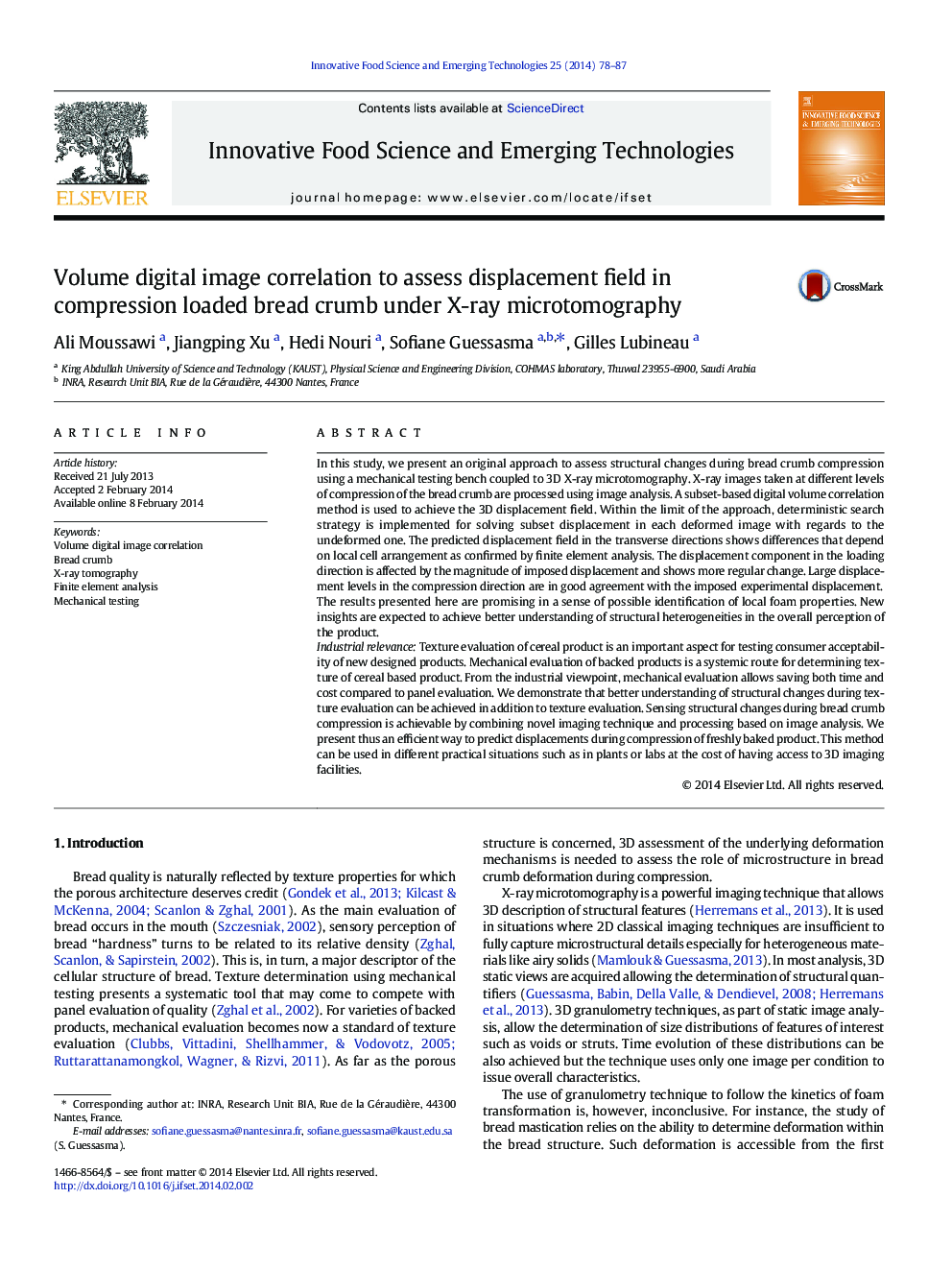| Article ID | Journal | Published Year | Pages | File Type |
|---|---|---|---|---|
| 2086744 | Innovative Food Science & Emerging Technologies | 2014 | 10 Pages |
•Compression of breadcrumb by 2% results in reduction of 7% of void content.•Average cell size and cell wall thickness reduction by 1/3 are observed.•Digital image correlation reveals heterogeneous displacement in all directions.•Sensitivity of correlation is proved for general strain of 0.5%.•Accuracy of the method is guaranteed for imposed displacement above 48 μm.
In this study, we present an original approach to assess structural changes during bread crumb compression using a mechanical testing bench coupled to 3D X-ray microtomography. X-ray images taken at different levels of compression of the bread crumb are processed using image analysis. A subset-based digital volume correlation method is used to achieve the 3D displacement field. Within the limit of the approach, deterministic search strategy is implemented for solving subset displacement in each deformed image with regards to the undeformed one. The predicted displacement field in the transverse directions shows differences that depend on local cell arrangement as confirmed by finite element analysis. The displacement component in the loading direction is affected by the magnitude of imposed displacement and shows more regular change. Large displacement levels in the compression direction are in good agreement with the imposed experimental displacement.The results presented here are promising in a sense of possible identification of local foam properties. New insights are expected to achieve better understanding of structural heterogeneities in the overall perception of the product.Industrial relevanceTexture evaluation of cereal product is an important aspect for testing consumer acceptability of new designed products. Mechanical evaluation of backed products is a systemic route for determining texture of cereal based product. From the industrial viewpoint, mechanical evaluation allows saving both time and cost compared to panel evaluation. We demonstrate that better understanding of structural changes during texture evaluation can be achieved in addition to texture evaluation. Sensing structural changes during bread crumb compression is achievable by combining novel imaging technique and processing based on image analysis. We present thus an efficient way to predict displacements during compression of freshly baked product. This method can be used in different practical situations such as in plants or labs at the cost of having access to 3D imaging facilities.
